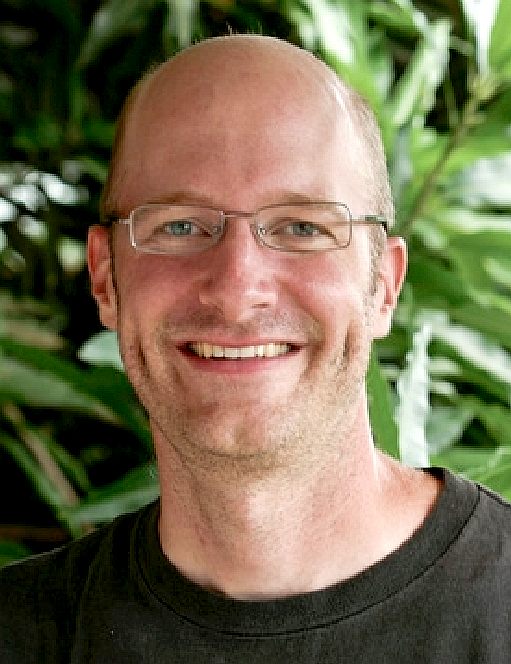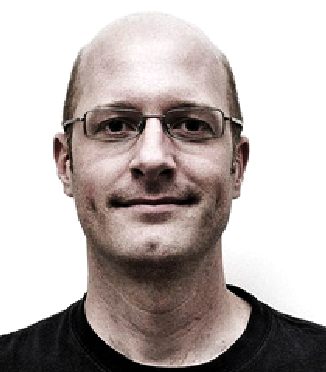|
ALEXANDER LEWIS WILD - MEDIA REVIEW
|
|||||||||||||||||||||||||||||||||||||||||||||||||||||||||
|
ALEXANDER LEWIS WILD - Is a macro photographer and a biologist based in Texas. According to his websites he started photographing insects in 2002 to complement his scientific work on ant taxonomy and evolution. Alex holds a Ph.D. in Entomology from the University of California (Davis) and is Curator of Entomology at the University of Texas, Austin, USA. Alex allows non-profit organizations to license his work at discounted rates, or free of charge, depending on the context of use. Educational classroom use by students, teachers, and researchers is free of license fees, strongly encouraged, and does not require prior permission, though he does like to be asked. If any project involves posting his photographs to the internet, images should be accompanied by a visible photo credit and a link back to his website for reference purposes is always a good idea or you may get a threatening email from him or his agents. Alex fights shy of copyleft and does not like Wikipedians using his pictures. But then nobody is perfect : )
OCTOBER 20 2011 - ENTOMOLOGY & NEMATOLOGY NEWS
DAVIS
- One of the nation’s best known and talented insect photographers will speak Wednesday, Oct. 26 at the
University of
California, Davis.
8th ANNUAL BIOMIMICRY EDUCATION SUMMIT - AUSTIN, TEXAS, OCTOBER 2015
A SUSTAINABLE WORLD THAT ALREADY EXISTS
- Humans are clever, but without intending to, we have created massive sustainability problems for future generations.
According to Biomimicry Institute in Montana, USA, solutions to these global challenges are all around us.
KEYNOTE PRESENTATION
Alex Wild
CONTACT ALEX
Alex Wild Photography 916 E Water St Urbana Illinois, 61802 United States
Tel:
(520) 548-8134
myrmecos.photos@gmail.com
ABOUT COPYRIGHT
Works of "art" benefit from copyright protection the moment it is created and fixed in a tangible form that it is perceptible either directly or indirectly with the aid of a machine or device. In order to qualify as being tangible a work has to be precise and unaltered. Altered art is no longer tangible depending on the alteration, but if additional art is included or a picture is cropped or of a different quality and general makeup; for example if the coloration is changed markedly - or if there is a combination of these changes, then a fresh copyright is generated in favor of the "artist" effecting the new art.
Examples of original artworks relating to insects that are registered are:
Number:
VAu 1-126-461
Unfortunately, you cannot actually see these works on the US Copyright site, so that it is difficult to be able to compare works that come up in web searches to be sure of authorship. Try this for yourself, all you get is a reference number, author name and address - but no picture. Indeed, there is a fee attaching to the obtaining of copies of the registered art and serious delays in receipt, should you need a copy of any registered art - for example, for impending litigation. It may be cheaper to force the other side to provide a copy of the art for you to compare - and then to check with the Copyright Office:
Library of Congress
Library of Congress
ALEX WILD'S COPYRIGHT REGISTRATIONS
There are numerous photographs from many well known and not so well known macro photographers that are used to illustrate the world of insects as may inspire animatronic artists and engineers to create their robotic masterpieces. Indeed, photography can enhance details of a project, where projector or other measuring techniques often fall short in this department and using a microscope constantly is tiring on the eye.
Thank heavens then for the internet and the large number of photographic enthusiasts - and reasonably priced camera equipment - without which the world would be a more mundane place to live in. On these pages we review the work of some of those amateurs and professionals, who have mastered the art. Some of the pictures are truly stunning, but as with all photography, you have to be in the right place at the right time.
LINKS & REFERENCE
https://www.ephotozine.com/article/6-top-insect-macro-photographers-19980 https://www.99inspiration.com/2016/04/16-mind-blowing-examples-of-insect-macro-photography/ http://farrell.oeb.harvard.edu/people/piotr-naskrecki http://today.uconn.edu/2011/11/conservation-biologist-takes-readers-on-journey-through-time/ http://www.diyphotography.net/the-comlete-guide-for-photographing-live-insects-at-home/ http://extreme-macro.co.uk/catching-insects/ https://biomimicry.org/ed-summit/presenter-bios/# http://www.insectphotography.com/ http://www.amateurphotographer.co.uk/technique/macro_photography/macro-insect-photography-nadav-bagims-bug-wonderland-56897 Photo credit A Wild: Jo-Anne Holley http://ucanr.edu/blogs/blogcore/postdetail.cfm?postnum=10052 http://www.facebook.com/alex.wild.758 http://myrmecos.net/ http://www.alexanderwild.com/ http://ucanr.edu/blogs/entomology/index.cfm http://ucanr.edu/blogs/blogcore/postdetail.cfm?postnum=10052
|
|||||||||||||||||||||||||||||||||||||||||||||||||||||||||
|
For the avoidance of doubt, Alexander Wild (including his group and/or sister companies) is/are in no way connected with Jameson Hunter Ltd or (unless specifically mentioned) any other company or concern using his photographs, but is simply included here by way of review of media articles or internet postings (to include images and image searches) and/or ownership of those marks and trade names, of photographers working in the field of macro photography. See the provisions of the Trademarks Act 1994 and the Copyright Designs and Patent Act 1988. In addition, Articles 9 and 10 of the Human Rights Act 1998 provide that any person or corporation has the right of freedom of thought and to receive and impart information. Please also note that if any of the above information is incorrect for any reason, such as alterations in any official register, that we will publish corrections on receipt of details, which should be independently verifiable. Information is thought to be correct at time of publication. We do not accept liability for quoted/reviewed third party errors in publication - where those third parties should be contacted directly to seek corrections, etc.
This page contains copyrighted material the use of which has not always been specifically authorized by the copyright owner. We are making such material available in our efforts to advance understanding of environmental, political, human rights, economic, scientific, and social justice issues, etc. We believe this constitutes a 'fair use' of any such copyrighted material as provided for in section 107 of the US Copyright Law. In accordance with Title 17 U.S.C. Section 107, the material on this page is distributed without profit to those who have expressed a prior interest in receiving the included information for research and educational purposes. This webpage is Copyright © 2017 Solar Cola Limited.
|


